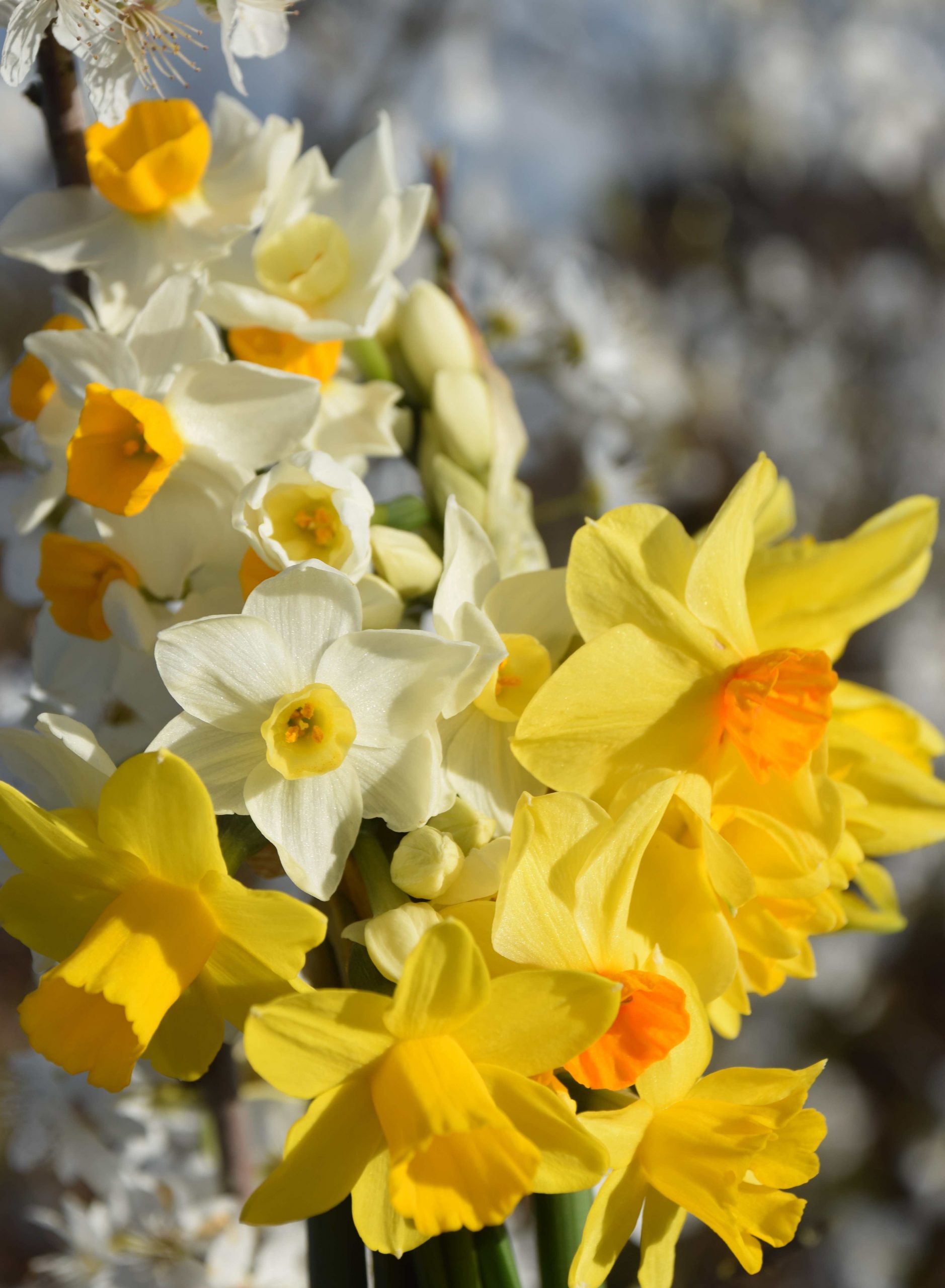
Last week I concentrated on planting daffodils in grass. This week I want to explain general planting and planting in pots. Unlike many bulbs, daffodils will flower perfectly the first spring after planting and they will grow and bloom for many years afterwards.
If you want to plant pots permanently, you must use John Innes compost or a mix of this and multipurpose compost. Multipurpose compost deteriorates in the pot and is not suitable for permanent plants.
You can layer your bulbs in pots. This is often called ‘lasagne planting’. Put tulips in first, add some compost and plant the daffodils in between and then plant crocus on top and perhaps some violas. This gives a succession of flowers and a mass of colour in a small pot but I would dissemble these when the foliage dies down in late May. Tulips need lifting every year. You can then plant the daffodils out in the garden the next year or use them again for pots. I do this myself – see last week’s blog.
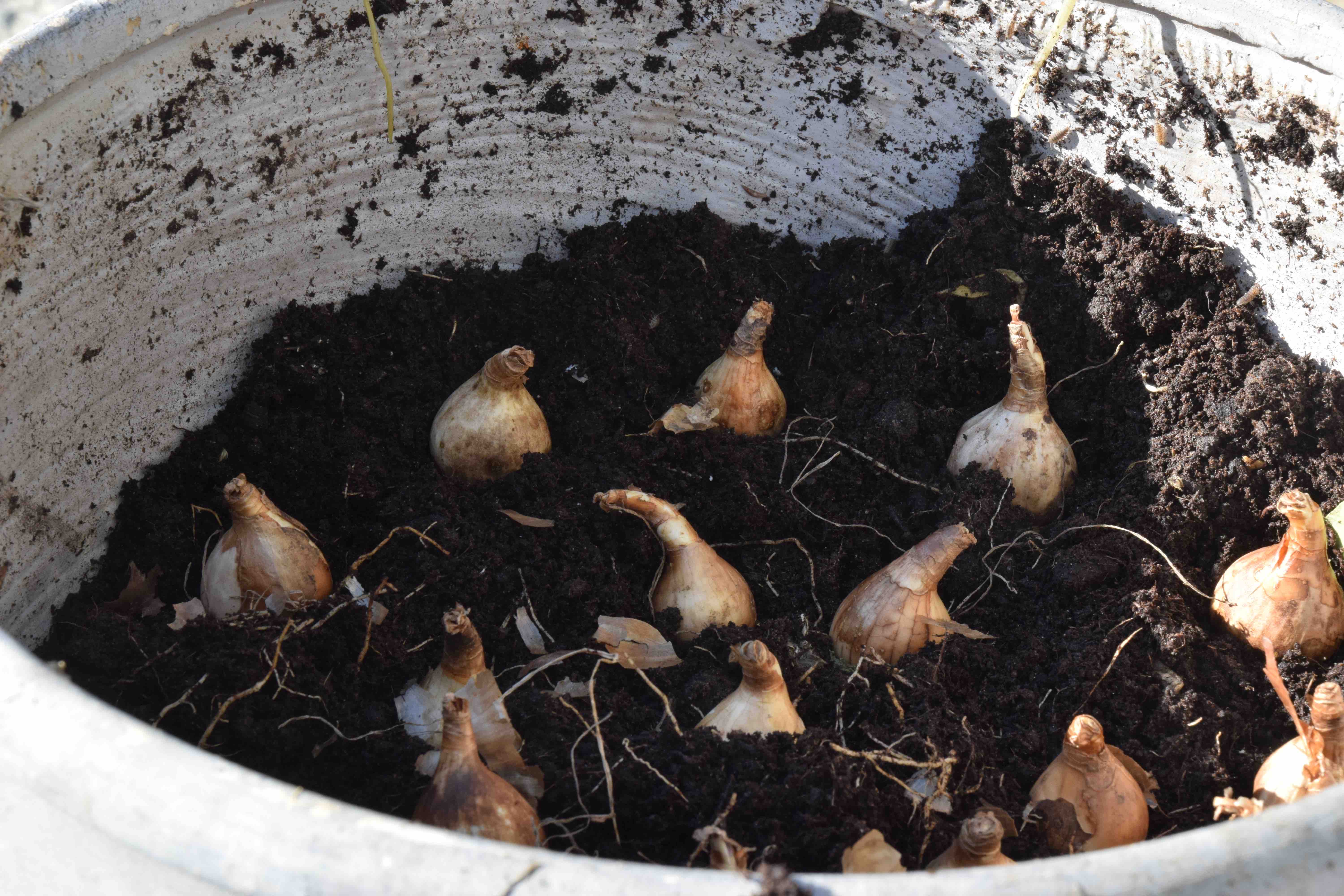
If you are planting in small pots on the patio, in window boxes or in hanging baskets, always choose dwarf kinds. When planted near the house the flower stems tend to ‘stretch’ to get to the light and will flop if they are too tall. The ubiquitous ‘Tête-à-tête’ is still a great choice. It is common because it is good! Another wonderful variety, that flowers about a month later, usually along with grape hyacinths (muscari) is ‘Hawera’. This has masses of slender stems with pale yellow flowers. I planted it in a basket with forget-me-nots, and it made a great show.
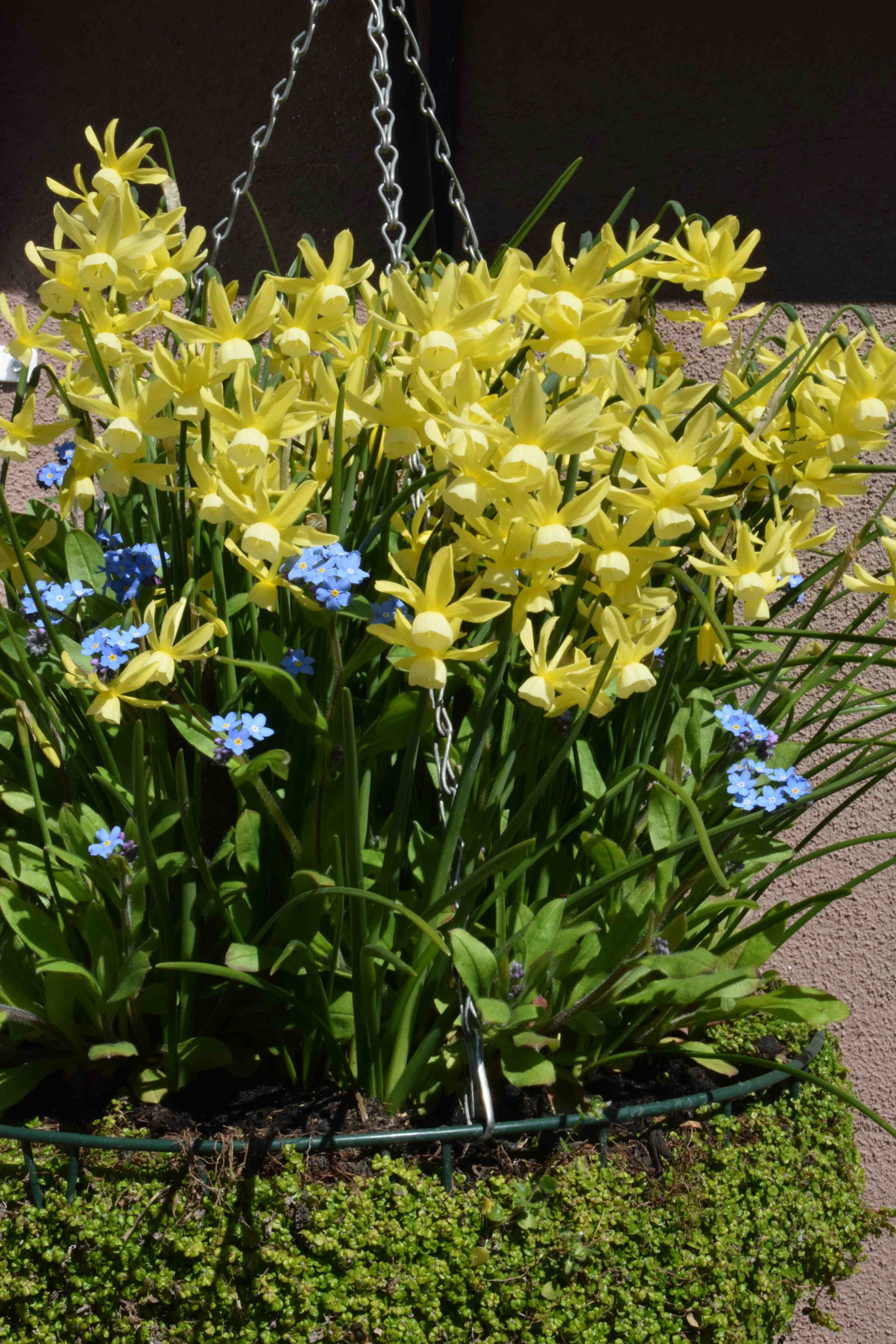
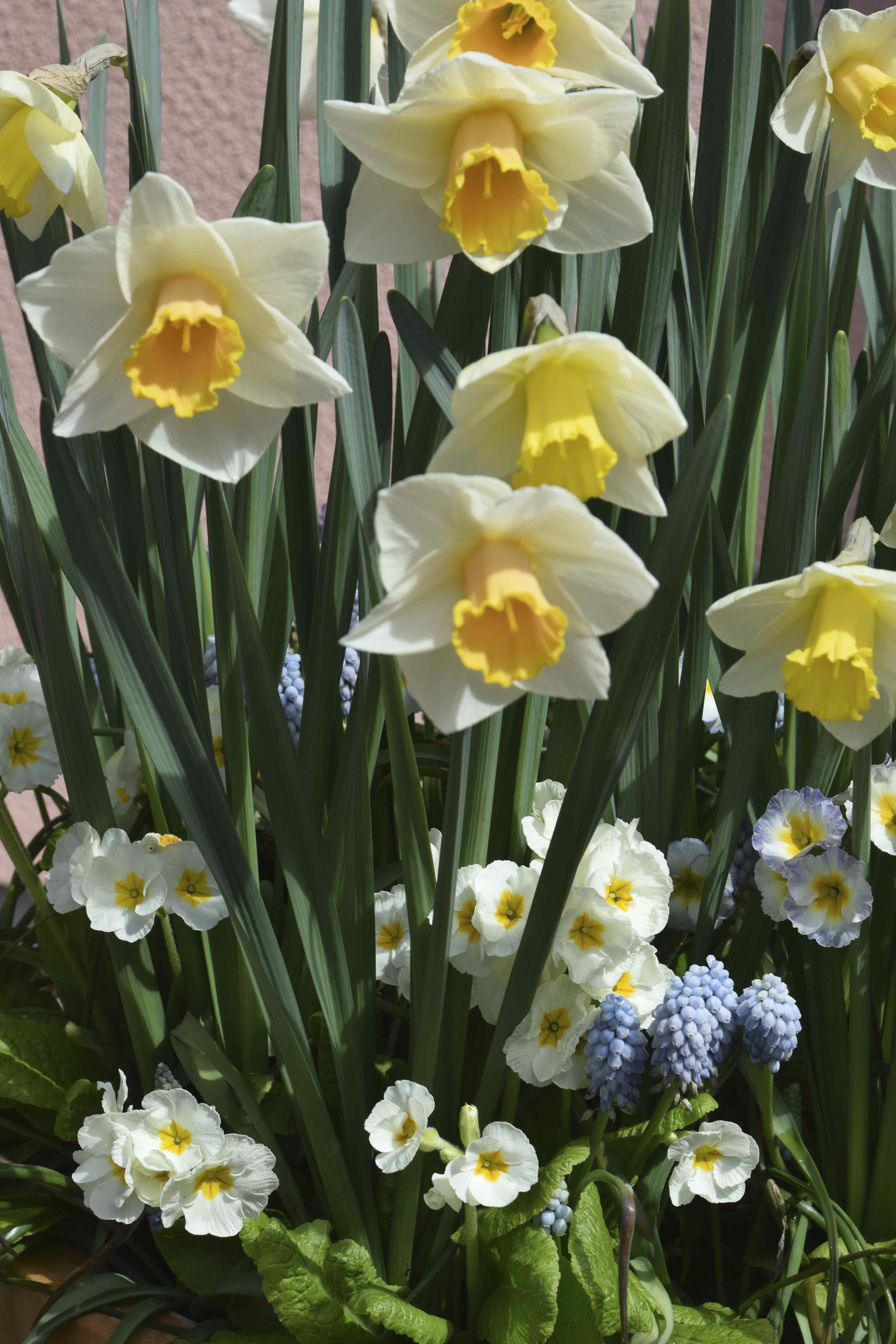
Because of the wide variety of colours in daffodils there is a huge range of effects you can achieve. Red and orange and yellow daffodils are perfect for fiery colour schemes with red tulips and bright wallflowers. White, cream and pink daffodils suit pastel colour schemes and with silver and grey foliage.
Don’t forget that daffodils often smell wonderful too. The tazetta kinds, with heads of several small flowers are usually strongly scented. These include the late-flowering ‘Cheerfulness’ and ‘Bridal Crown’. Both are creamy white and double. ‘Geranium’ (below) is also a good choice, with orange and white flowers.
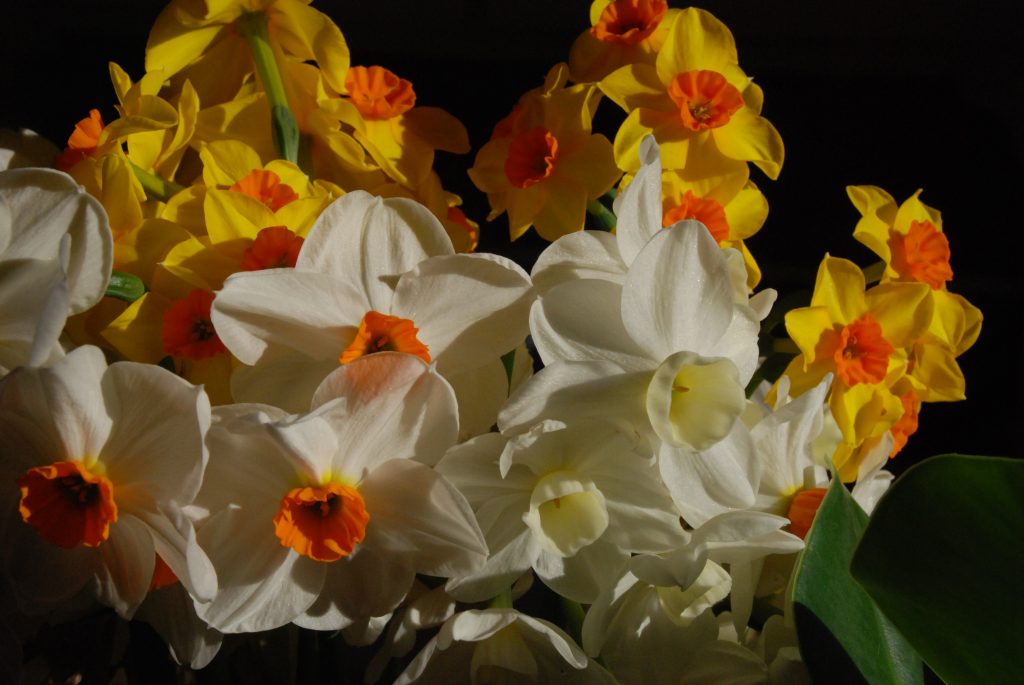
The most beautiful scent of all belongs to the pheasant-eyes such as ‘Actaea’. These bloom later than most and have white flowers with a red ‘eye’, often as late as May. The bulbs are dark and skinny and don’t look much in the pack but this is natural so don’t be put off.
Remember that daffodil foliage must be left for six weeks after flowering before it is cut off. You MUST follow this rule if you want flowers the following year. NO tying the leaves in knots either!
The foliage of daffodils can look untidy as it turns yellow so I plant daffodils among shrubs or herbaceous plants that will grow and cover the leaves later.
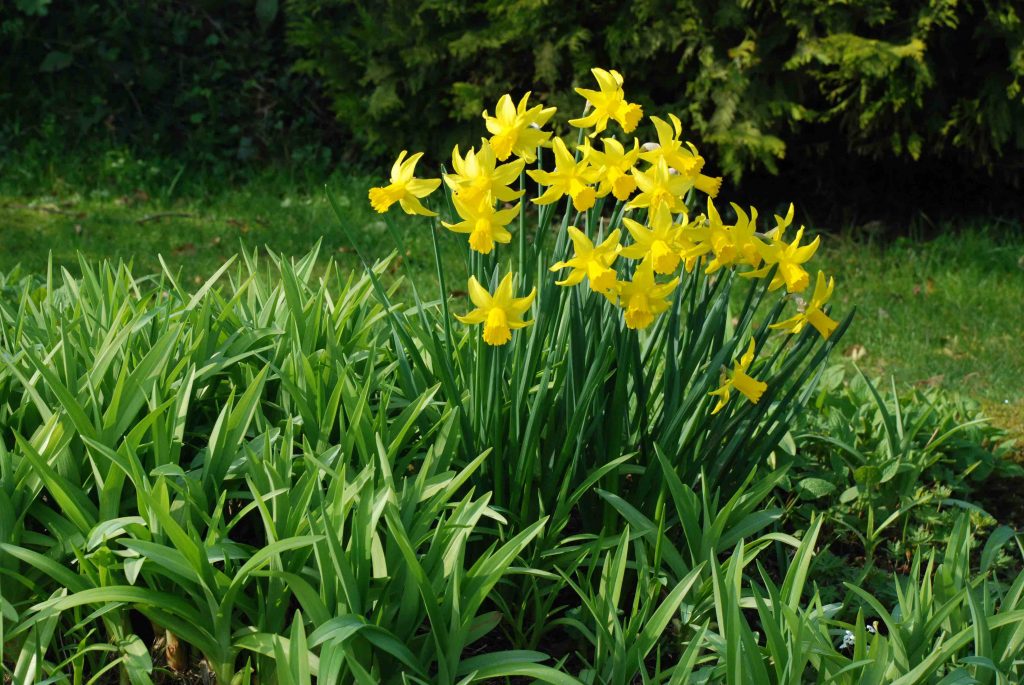
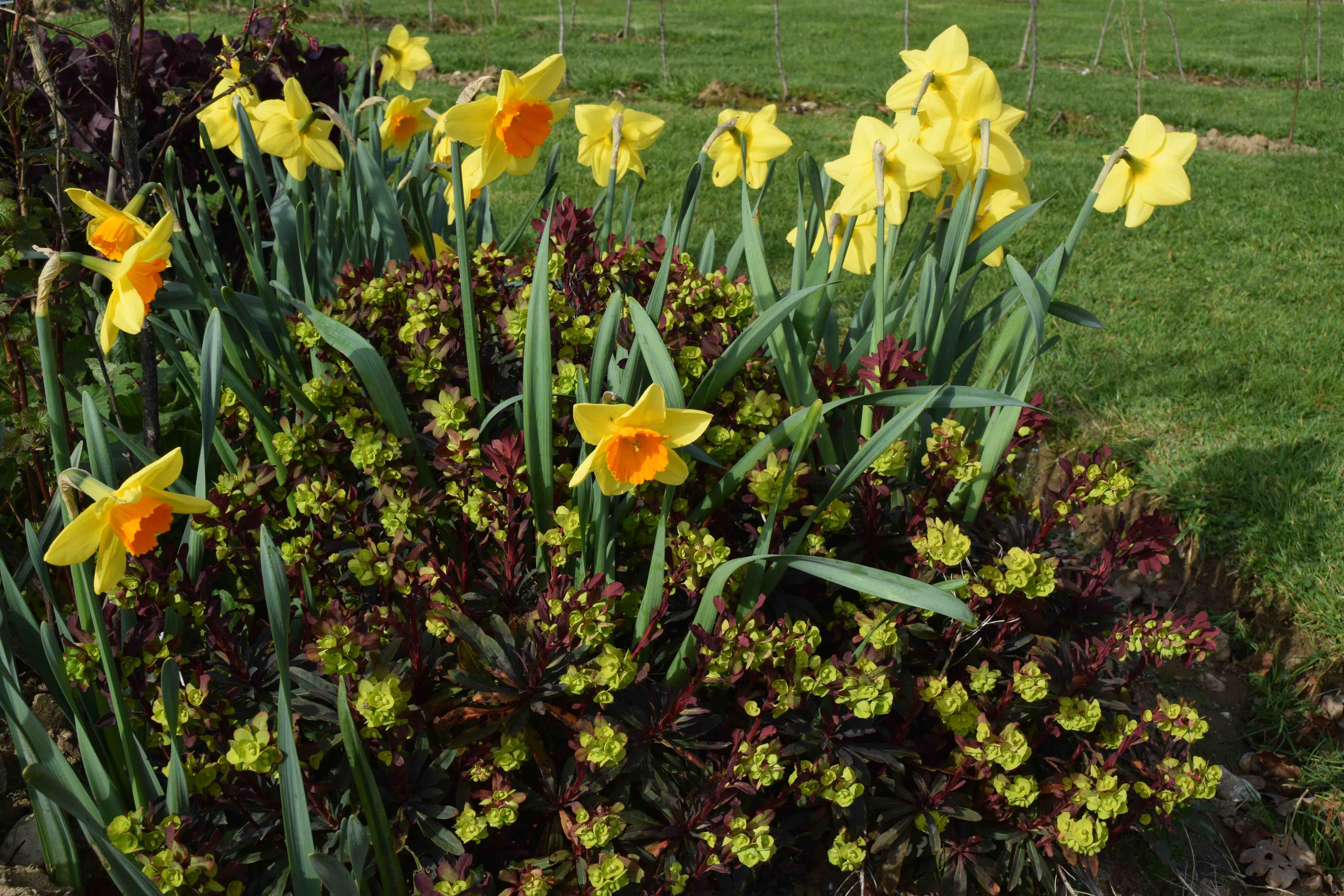
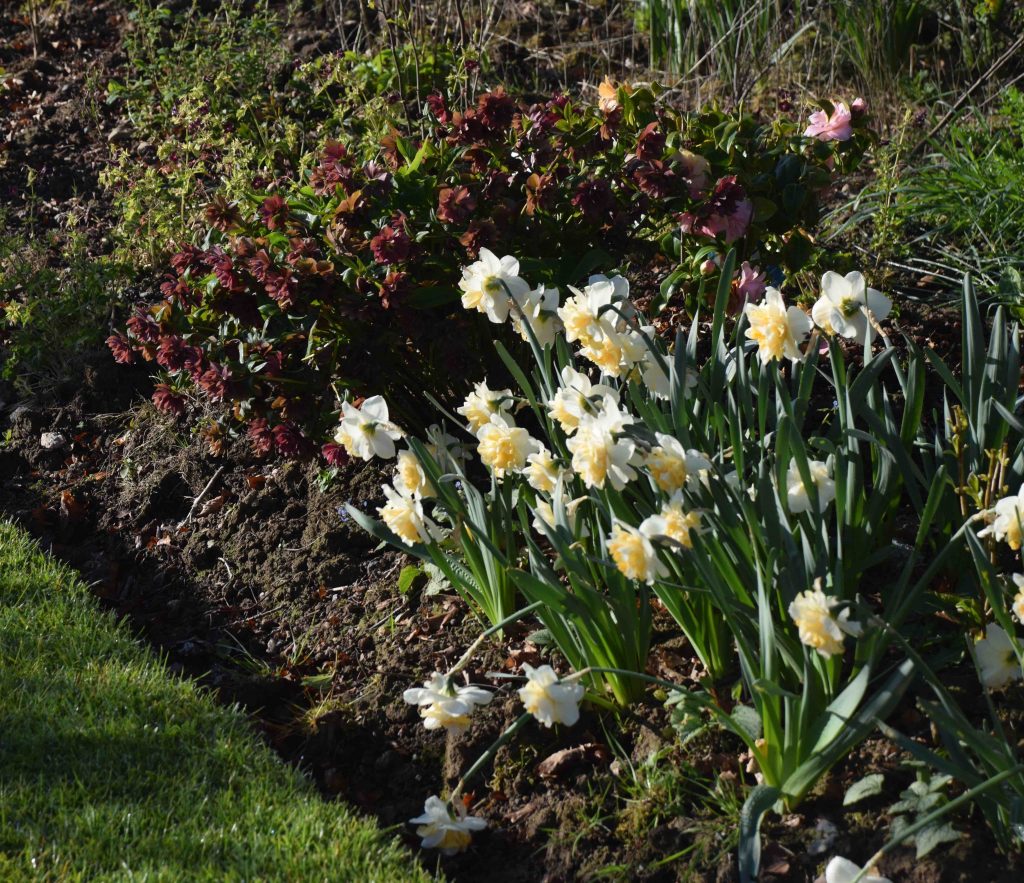
Next week – more bulb ideas: tulips